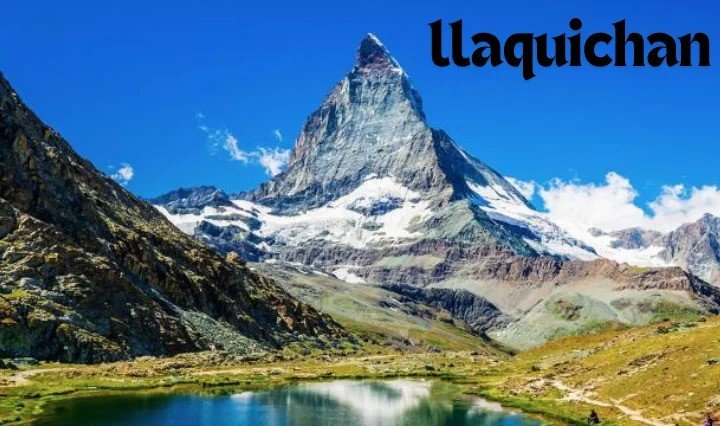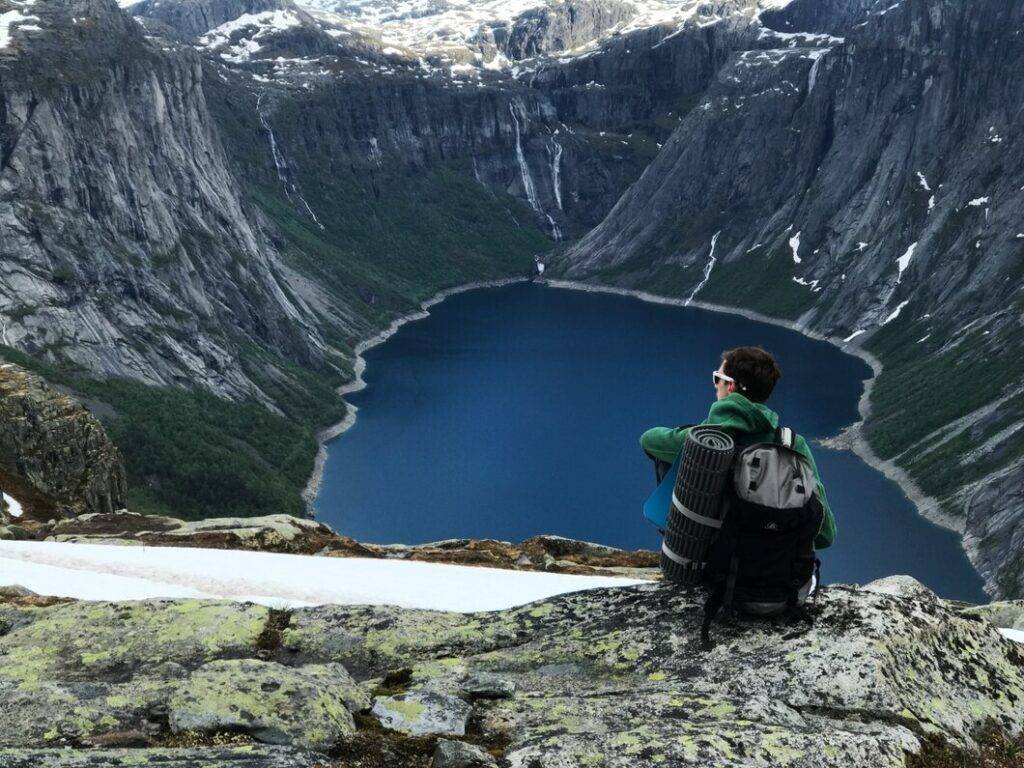Visiting Llaquichan was incredible. The beautiful forests, diverse wildlife, and peaceful lakes made it a perfect getaway from daily life. Hiking and watching birds were highlights of my trip.
Llaquichan is a beautiful, less well-known natural place with hills, forests, lakes, and other types of landscapes. Many of the plants and animals that live there are only found in that area.
Explore the hidden beauty of Llaquichan, where stunning views and unique wildlife await you!
What is Llaquichan and where is it located?
Llaquichan is a remarkable natural and cultural phenomenon found mainly in South America, with significant presence in countries like Peru and Bolivia. This region is renowned for its breathtaking landscapes, which include rolling hills, dense forests, and clear lakes. The geographical spread of Llaquichan underscores its importance, as it is deeply woven into the cultural fabric of these areas.
In Peru and Bolivia, Llaquichan is celebrated not only for its natural beauty but also for its rich traditions and practices that vary by region. Each local community brings its own unique elements to Llaquichan,
What makes Llaquichan a unique natural wonder?
Diverse Landscapes:
Llaquichan boasts a striking range of landscapes, including rolling hills, dense forests, and clear, sparkling lakes. This variety in terrain creates a dynamic and picturesque environment that is both visually stunning and ecologically significant.
Rich Biodiversity:
The region is home to a wealth of plant and animal species, many of which are endemic to the area. This high level of biodiversity is supported by the temperate climate and varied habitats, making Llaquichan a vital area for conservation and ecological study.
Endemic Species:
Llaquichan features several plant and animal species found nowhere else in the world. These unique species have adapted to the specific environmental conditions of the region, adding to its global importance.

Cultural Significance:
Beyond its natural beauty, Llaquichan is deeply intertwined with the cultural practices of local communities in South America, particularly in Peru and Bolivia. The region’s natural features often play a role in traditional customs, spiritual practices, and local folklore.
Pristine Environment:
Llaquichan remains relatively untouched by modern development, preserving its natural beauty and ecological balance. This pristine condition allows visitors to experience nature in a more authentic and unspoiled state.
Conservation Efforts:
Ongoing conservation efforts aim to protect Llaquichan’s unique ecosystems and biodiversity. These efforts are crucial for maintaining the region’s natural heritage and ensuring that future generations can also experience its wonders.
Facilities for Visitors in Llaquichan:
Eco-friendly Accommodations:
Llaquichan offers a range of eco-friendly lodging options, including rustic lodges, guesthouses, and campsites that blend with the natural environment and promote sustainable tourism.
Guided Tours:
Local guides and tour operators provide guided tours that enhance visitors’ experiences by offering insights into the region’s wildlife, flora, and cultural heritage. Tours can include hiking, birdwatching, and nature walks.
Visitor Information Centers:
Information centers or local visitor hubs offer maps, brochures, and advice on attractions, trails, and safety tips. These centers may also provide details on local conservation efforts and community activities.
Trail Networks:
Well-maintained hiking and walking trails are available, catering to various skill levels from easy walks to challenging hikes. Trails are marked and often feature informational signs about local wildlife and plant species.
Picnic Areas:
Designated picnic spots with scenic views and basic amenities like tables and benches allow visitors to enjoy meals in nature while minimizing their impact on the environment.
Restrooms:
Basic restroom facilities are provided at key locations such as trailheads, visitor centers, and main camping areas to ensure visitor comfort.
Local Cuisine:
Some areas offer local dining options or small eateries where visitors can sample regional dishes made from local ingredients, providing a taste of the area’s culinary traditions.
Wildlife Viewing Platforms:
Observation points or platforms may be available for wildlife viewing, allowing visitors to safely watch and photograph animals in their natural habitats without disturbing them.
Educational Programs:
Educational programs or workshops may be available, focusing on topics such as conservation, local flora and fauna, and traditional practices. These programs enhance the learning experience for visitors.
Emergency Services:
Basic emergency services and first aid stations are typically available, especially in popular or remote areas, to ensure visitor safety and provide assistance in case of an emergency.
Local Artisans and Souvenirs:
Small shops or markets may offer handcrafted souvenirs and locally-made products, giving visitors a chance to purchase unique items and support local artisans.
How does the climate in Llaquichan contribute to its biodiversity?
The great biodiversity of Llaquichan is mostly supported by its climate. The area has a moderate climate with year-round, uniformly distributed rainfall, marked by warm summers and cold winters.
This steady moisture creates a range of habitats in Llaquichan by supporting luxuriant vegetation and a wide variety of plant life. The steady environment provided by the temperate climate and plentiful rainfall supports the development of lush woods, colorful wildflowers, and distinctive endemic species.
What are some unique plant species found in Llaquichan?
Numerous rare plant species that are found in Llaquichan add to the area’s abundant biodiversity. The Llaquichan Orchid is unique among them due to its remarkable look and scarcity. This orchid, which is restricted to the area’s deep woodlands, attracts the attention of both botanists and nature lovers because to its vivid colors and complex patterns.
The Golden Fern is another amazing plant that grows in the humid, shady undergrowth of the high-altitude regions of Llaquichan. Its characteristic golden fronds contribute to the area’s aesthetic appeal and help to stabilize the soil and provide habitat for the local fauna. The Llaquichan Medicinal Herb is also well-known for its customary application in indigenous cultures.
How have medicinal plants in Llaquichan been used by local communities?
Native American groups in the area have long relied on medicinal herbs as part of their customs. These plants, which are utilized for their therapeutic qualities in many facets of daily life, are intricately woven into the regional culture.

Llaquichan Root, a plant long valued for its anti-inflammatory and analgesic properties, has been used for ages in teas and poultices to ease aches and pains in the muscles and joints. In a similar vein, the antibacterial Sacred Leaf of Llaquichan is frequently used in rituals and medicines to ward off infections and strengthen immune function.
What types of mammals can be found in Llaquichan?
Andean Deer:
A major herbivore that feeds on grasses and leaves, the Andean Deer is distributed throughout the high-altitude and forested regions of Llaquichan. They act as prey for larger predators and are essential to the preservation of plant diversity.
Spectacled Bear:
Found in the hilly and forested regions of Llaquichan, this bear species is the only one endemic to South America. It is essential for seed spreading and consumes a wide variety of foods, such as fruit, insects, and small vertebrates.
Mountain Viscacha:
This mouse species, which is acclimated to high altitudes, inhabits rocky, open spaces. Its burrowing practices improve the aeration and structure of the soil.
Southern Fox:
This versatile carnivore can be found in both open spaces and woodlands in Llaquichan. It aids in population control by feeding on insects, birds, and small animals.
Different Rodents:
These rodents, which include the Andean Cavy, are essential for the spread of seeds and act as prey for larger predators. Their burrowing practices have an effect on plant communities and the health of the soil.
Bats:
A variety of bat species may be found in Llaquichan, where they are vital to pollinate and control insects. Fruit-eating bats promote forest regeneration by aiding in the distribution of seeds.
Tamandua (Anteater):
The Tamandua, also known as the lesser anteater, is located in Llaquichan’s more forested sections. It contributes to the management of ant and termite populations by feeding mostly on them.
Ocelot:
Living in the deep forests of Llaquichan, the ocelot is a small but fierce predator. Its presence is a sign of a healthy and balanced ecology because it feeds on tiny mammals, birds, and reptiles.the significance of protecting this botanical legacy.
What role do the water bodies play in Llaquichan’s ecosystem?
Water bodies in Llaquichan play a vital role in sustaining the region’s diverse ecosystem. The rivers, lakes, and streams provide essential resources for a wide range of flora and fauna, contributing to the overall ecological balance.
These aquatic environments support numerous species of fish, amphibians, and invertebrates, which in turn serve as food sources for birds and larger mammals. The nutrient-rich waters foster the growth of aquatic plants and algae, which are crucial for oxygenating the water and supporting aquatic life.
FAQS:
Are there guided tours available in Llaquichan?
Yes, guided tours are often available and can enhance the experience by providing insights into the region’s ecology, history, and local culture. Local guides can offer valuable knowledge and help navigate the diverse landscapes.
What wildlife can I expect to see in Llaquichan?
In Llaquichan, you may encounter a range of wildlife including Andean Deer, Wild Boar, Andean Puma, Spectacled Bear, various bird species like the Andean Condor, and numerous reptiles and amphibians.
How does Llaquichan contribute to scientific research?
Llaquichan contributes to scientific research by providing a unique environment for studying diverse ecosystems, endemic plant species, and wildlife behavior. Its relatively untouched habitats offer opportunities for research in conservation biology and environmental science.
Can visitors participate in local cultural activities in Llaquichan?
Yes, visitors can often participate in local cultural activities such as traditional ceremonies, community festivals, and learning about indigenous practices.
What safety precautions should I take when visiting Llaquichan?
When visiting Llaquichan, it’s important to take safety precautions such as preparing for varying weather conditions, carrying sufficient supplies, following local guidelines.
Conclusion:
Llaquichan is a stunning and lesser-known natural area with hills, forests, and lakes. It’s home to many unique plants and animals found only there. This hidden gem offers a peaceful escape and a chance to see rare wildlife and beautiful landscapes


